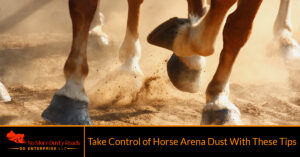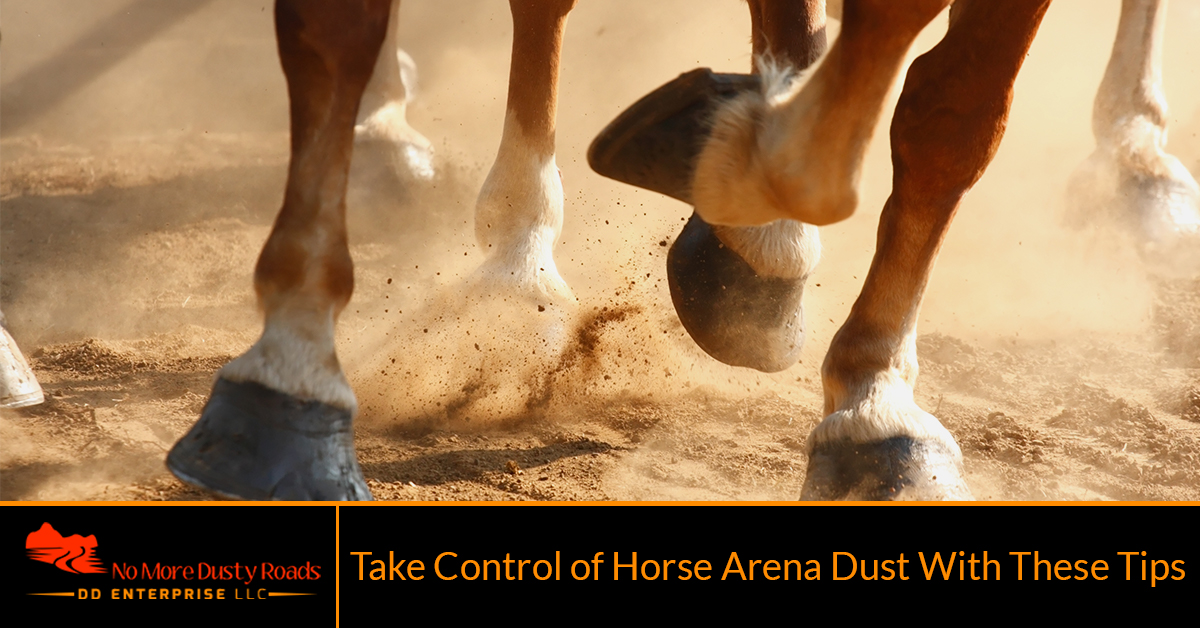
Whether you own a horse arena or you take your children to horseback riding classes in one, you likely already know how dusty these spaces can get. A dusty horse arena can be very unpleasant for the riders, trainers, and spectators watching nearby. Not only can these spaces become uncomfortable when unkempt, the frequent exposure to dust can pose significant health risks for both the rider and the horse.
In this blog, we’ll discuss how you can take control of horse arena dust. If you’re near Bozeman and you need assistance controlling the dust in your horse arena, contact DD Enterprise today. Our experts utilize an environmentally friendly magnesium chloride-based liquid mixture that offers an effective solution to dust issues. Failure to manage the dispersion of dust in your horse arena can result in serious human health risks, so it’s important to seek professional help right away. If you have questions regarding our horse arena dust control services, contact us today!
Managing Dust Control In A Horse Arena
Have you ever entered a horse arena and felt like you were walking head-first into a sandstorm? Not only can excessive dust be unpleasant to riders, it can be as equally distracting to the horses as well. Contrary to popular belief, dust isn’t just generated in dry weather conditions. Dust consists of fine particles that can become airborne, and the particles can be composed of clay, silt, pulverized sand, and even organic components.

When it comes to examining your horse arena, the first thing you’ll want to look at is your base. A properly compacted base is critical to the prevention of dust issues, mainly because it prevents the native soil from working its way to the top of the ground surface. If your base fails and begins to break apart, it’s going to lose its effectiveness as a barrier. It’s important to address any issues with your base before tackling any other potential sources of dust. If you fail to do so, you will always be battling dust, regardless of any additional measures you may take. Some important things to keep in mind are:
- If the base of your arena isn’t properly compacted, it will lead to dust issues down the line.
- Specific additives like crumb rubber can be used to help prevent footing breakdown. It should only be added to fresh footing, rather than already-dusty areas.
- Many dust control products on the market will contain petroleum derivatives like mineral oil and Vaseline.
- Water can be an effective dust suppressant, since watering coats particles and makes them stick together.
- Salt is another common dust suppressant that can be used to control the dust in your horse arena. Many people use calcium chloride or magnesium chloride to control dust, and if enough humidity is present, both are quite effective.
- Wood and fiber additives can be added to horse arenas to make the dust particles too heavy to become airborne. Wood can also act as a buffer to slow the breakdown of sand, and it will boost the moisture-retention capacity of your arena.
- Fiber additives work as well, and they tend to be more durable than wood particles.
Horse Arena Dust Control In Bozeman
If you live near Bozeman and you’re looking for Montana’s dust control experts, contact the professionals at DD Enterprise today. We’ve helped hundreds of people remedy their dust control issues in their horse arena venues, barrel racing arenas, and other equine sports environments, and we would love to do the same for you. If you’re interested in learning more about our dust control solutions or you’d like to learn more about our gravel road stabilization services, contact us today!

